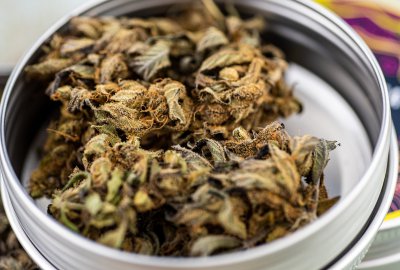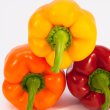
Lavender is a plant that has been used for centuries not only for decorative purposes, but above all for care and health. Get to know its versatile properties.
Lavender is not only impressive in its appearance and smell, but also in its numerous health properties. It has an antifungal effect, supports digestion, relieves pain, helps to fight infections. Although it is mainly associated with the hills of Provence and Croatia, it is also grown in Poland.
Key properties of lavender
Lavender blossoms contain many valuable ingredients, including, above all, the most important:
- a large amount of tannins (about 12%), i.e. active substances that have antibacterial, anti-inflammatory and soothing effects on skin complaints, supporting the functioning of the digestive system;
- triterpenes with antioxidant and anticancer properties;
- Phytosterols that help lower "bad" cholesterol levels, among other things;
- anthocyanins, which have antioxidant and anti-inflammatory effects;
- and also: coumarins, organic acids, mineral salts.
What does lavender do?
- It affects the proper functioning of the digestive system. Lavender is recommended for various digestive problems. It stimulates the secretion of gastric juices and bile, supports metabolism, relieves flatulence, accelerates peristaltic movements of the intestines, helps to treat constipation and indigestion. Drinking an infusion of lavender flowers, adding lavender leaves to food or using essential oil (often used in herbal preparations for dyspeptic complaints) is recommended for all dyspeptic complaints.
- Helps to relieve pain. Eating infusions of lavender flowers can help to relieve indigestion or abdominal pain. Gentle massages with lavender oil will help relieve tension headaches, migraines and muscle pain. To take advantage of the analgesic properties of lavender, you can add oil to a warm bath.
- Helps to combat infection. Lavender, especially essential oil, has antiseptic and bactericidal properties. It is used as an auxiliary agent in relieving the symptoms of pharyngitis, sinusitis, bronchitis and pharyngitis.
- It stimulates the immune system. It is worth using lavender in the form of a spice, infusion or oil as a natural prophylactic agent which stimulates the immune system. It will be particularly useful in times of increased risk of colds and flu.
- It's good for your well-being. Aromatic compounds contained in lavender relieve the effects of emotional stress and nervous tension. They gently calm down and at the same time stimulate in moments of fatigue and exhaustion.
Lavender oil
The most valuable in lavender is an essential oil of extremely complex structure. It contains as many as 150 active ingredients, some of which are extremely rare in the plant world. These include linalol, geraniol, furfurol, pinene, tinol, borneol, as well as tannins, sugars and minerals. Lavender extract is one of the few oils that can be applied directly to the skin without the need to dilute it first. It can also be administered orally as it is excreted partly with urine and partly exhaled with air through the lungs.
Lavender oil can be used in many different ways. Rubbed into the skin helps to relieve pain. It also helps to relieve muscle tension. It is beneficial for skin care as it contains exfoliating organic acids, tannins and free radicals. It disinfects and refreshes the skin, reduces sebum production. When taken orally, it supports the digestive processes of the body. The pleasant aroma of lavender oil has a calming and yet stimulating effect. It helps to relax, relieve stress, make falling asleep easier.
AMOL. Oral fluid, skin lotion, composite product. Responsible entity: Takeda Pharma Sp. z o.o. Indications: Externally: to improve the well-being, e.g.: in the course of a cold (for rubbing), in headaches, muscle pains, to reduce ailments after insect bites. Internally: in digestive disorders (dyspeptic) e.g. bloating, indigestion. Contraindications: Amol must not be used: in case of hypersensitivity to any of the product components, in bronchial asthma and other respiratory tract diseases accompanied by severe hypersensitivity of the airways, in children under 12 years of age. Internally: bile duct obstruction (e.g. in the course of cholelithiasis), gallbladderitis, in people with chronic liver diseases, in people addicted to alcohol. Externally: on damaged skin, e.g. burns, splashes and open wounds, skin diseases with rash, mucous membranes and in the eye area. Package: 100 ml, 150 ml, 250 ml liquid. Responsible entity: Takeda Pharma Sp. z o.o.
Before use, read the leaflet, which contains indications, contraindications, data on adverse reactions and dosage and information on the use of the medicinal product, or consult your doctor or pharmacist, as any drug used improperly endangers your life or health.
External partner material





















